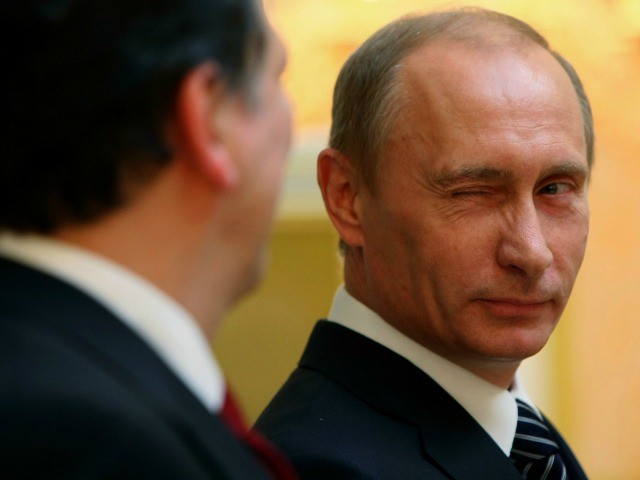
An official report published in the Baltic state of Latvia reveals the new Russian understanding of war and how Vladimir Putin can expand the territory of the Russian Federation without triggering the collective defense mechanism of NATO.
Familiarity is said to breed contempt. In the case of the Baltic states, proximity to Russia has bred a deep understanding of the Kremlin, its strategic culture, and its intentions. Invaded and illegally occupied by the Soviet Union in 1940, Estonia, Lithuania, and Latvia reasserted their independence from Moscow in 1990 and since 2004 are full treaty allies of the United States as members of NATO.
These small states are often discussed collectively at the “Balts,” and according to Toomas Hendrik Ilves, the current president of Estonia, the three states are bound together by the shared tragic historical events of their occupation and repression by their easterly neighbor.
Having sizable Russian-speaking minorities, in part as a result of Moscow sending military families there during the Cold War occupation, all three are vulnerable to the “Crimea scenario” in which Moscow could deploy troops under the guise of “protecting” their ethnic kin.
Given the heightened threat to Baltic independence, the Latvia National Defense Academy has just issued a remarkable report detailing how the Kremlin understands warfare in the 21st century.
The author, Janis Berzins, calls the Russian approach “New Generation Warfare” and bases his analysis on actual Russian doctrine and the recent events in Ukraine. This approach to conflict is very different from that taught in Western military academies or war colleges and emphasizes indirect ways to weaken the enemy and avoiding frontal assaults in favor of using non-physical approaches such as political and economic warfare.
Keys elements of the new Russia playbook:
- Emphasize direct influence over your enemy as opposed to their direct destruction
- Instead of annihilation of the target encourage inner decay
- De-emphasize the use of kinetic weapons in favor of cultural war relying heavily on propaganda and subversion.
Together these add up to a “contactless” form of “total war” in which the need to actual deploy combat troops into hot war-zones is unnecessary since the minds of the enemy population and their leaders have been conditioned to such an extent that effective resistance is not even considered. (Interestingly, this is what the ancient Chinese strategist Sun Tsu called the ultimate victory: winning without fighting.)
The text details how this indirect asymmetric approach has been used in an eight phase plan in the Crimea and how it can be used against the Baltic states without automatically triggering a military response by NATO.
Article Five of the Washington Treaty that founded NATO was predicated on an automatic military response to an armed attack by regular troops of the USSR against any Alliance state. Russia’s New Generation Warfare expressly avoids the use of kinetic force or officially identifiable Russian units. As a result, the author concludes that NATO legal structures and military doctrines are unable to deal with the threat of another land-grab by President Putin.
Berzins describes a scenario whereby Russia will sow discontent among the population of the Baltic states, especially the Russian-speakers, target the political elite with misinformation and destabilizing leaks, bribe or intimidate key players, and then deploy Russian “militias,” as occurred in Crimea, and declare a fait accompli absorption of another formerly independent territory.
The report concludes by stating that although Russia’s strategy is well-thought out and sophisticated, it remains fundamentally opportunistic. Meaning, Putin will only use this approach if the US and NATO lets him. As a result, the future independence of America’s allies depends upon decisions made in Washington and Brussels.
Sebastian Gorka PhD is the National Security Editor for Breitbart.com.

COMMENTS
Please let us know if you're having issues with commenting.